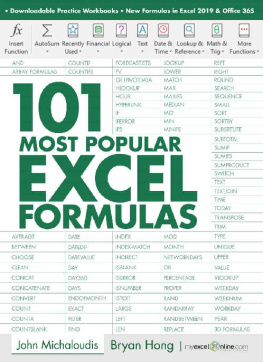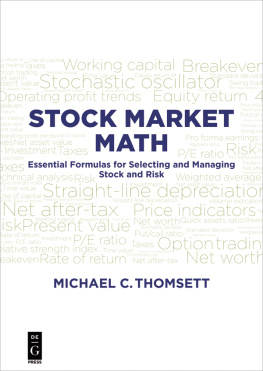Michael C. Thomsett
Math for Managers
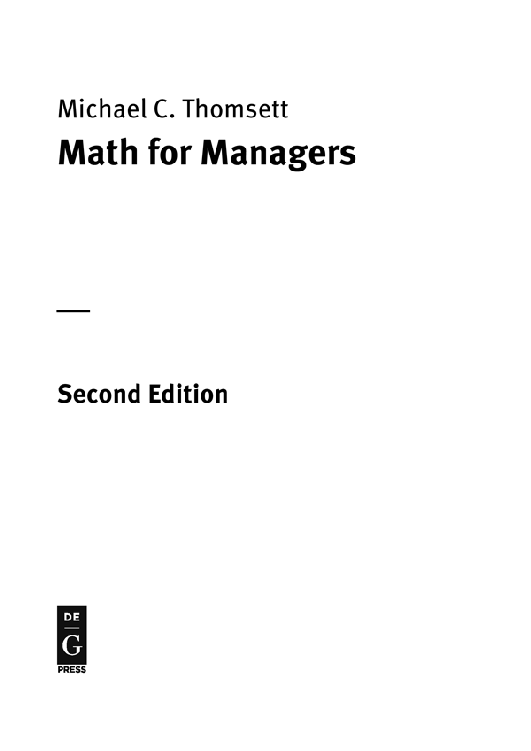
ISBN 978-1-5474-1670-7
e-ISBN (PDF) 978-1-5474-0063-8
e-ISBN (EPUB) 978-1-5474-0065-2
Library of Congress Control Number: 2018955034
Bibliographic information published by the Deutsche Nationalbibliothek
The Deutsche Nationalbibliothek lists this publication in the Deutsche Nationalbibliografie;
detailed bibliographic data are available on the Internet at http://dnb.dnb.de.
2019 Michael C. Thomsett
Published by Walter de Gruyter Inc., Boston/Berlin
www.degruyter.com
About De|G PRESS
Five Stars as a Rule
De|G PRESS, the startup born out of one of the worlds most venerable publishers, De Gruyter, promises to bring you an unbiased, valuable, and meticulously edited work on important topics in the fields of business, information technology, computing, engineering, and mathematics. By selecting the finest authors to present, without bias, information necessary for their chosen topic for professionals , in the depth you would hope for, we wish to satisfy your needs and earn our five-star ranking.
In keeping with these principles, the books you read from De|G PRESS will be practical, efficient and, if we have done our job right, yield many returns on their price.
We invite businesses to order our books in bulk in print or electronic form as a best solution to meeting the learning needs of your organization, or parts of your organization, in a most cost-effective manner.
There is no better way to learn about a subject in depth than from a book that is efficient, clear, well organized, and information rich. A great book can provide life-changing knowledge. We hope that with De|G PRESS books you will find that to be the case.
Introduction: The Basic Problem with Numbers
In this second edition of Math for Managers , an effort has been made to maintain a logical sequence of chapters and topics; and to keep all math on a basic level.
Most managers do not hold advanced mathematical degrees, so simplicity is a worthy goal. Many math books are overly complex and can be appreciated only by a limited number of managers. The author is not a mathematically inclined person and has not been educated in this area. However, he has considerable experience in management. Like most managers, he has had to struggle to master essential mathematical principles and guidelines, and this has not been the easiest attribute of his experiences. It is certain that the same holds true for most other managers, educated in business planning and marketing, but not necessarily in math.
Even so, the realities of the mathematical world cannot be overlooked. Business operates on measurement, and that invariably involves some level of calculation. Its all in the numbers. Everyone has heard this statement and it is true. Your performance is invariably judged by how much profit you create or by how much cost you incur in your segment, team or department. The bottom lineprofit or lossis the universal means for monitoring performance and for determining whether an initiative was worthwhile.
With the dominance of the bottom line in every aspect of how your performance is graded, you have a distinct advantage if you are skilled at conveying information in terms of profitability and other numerical outcomes (budgets, customers, units of production, and sales, employees, etc.).
You are also at a distinct disadvantage if you cannot communicate the profit or loss aspects of your work to management. On a most basic level, it is less effective to just ask management for something, than to demonstrate how an approval is going to create additional profits or cut costs and expenses. This is the rudimentary distinction between managers with communication skills, and those who struggle every day trying to find the best way to communicate what they know.
If you do not have a background and an education in finance, you probably struggle with these issues daily. Even those trained in accounting may find it difficult to summarize their requests in plain, simple, and clear terms for management. No one is immune from the difficulty in matching numerical information with a concise request or recommendation. For some, the numerical aspects of the job are comfortable but conveying the essence to management is much more difficult. For others, even those with exceptional communications skills, reducing the numbers (crunching) to the basics is the real challenge.
Your purpose in making effective use of numerical information is to convey essential data management needs to make an informed decision, and to make your case to management convincingly. Management faces an unending array of choices, and the desire is to make a choice that is not only most profitable, but that also involves less risk than other choices.
It is not enough to demonstrate that a decision is likely to be profitable if it also incurs unacceptable risks. These include potential liability, supply chain losses, reduced customer satisfaction, or damage to brand and reputation for the company. When an esteemed company like Mattel contracted manufacturing in China, but failed to properly supervise quality control, the consequence was that toys were sold in the U.S. containing harmful lead. The product cost aspects of this mistake were easily rectified. However, the reputation to the company, while less tangible, is likely to affect profits at an unknown level and for an unknown period. The analysis of risk involves both tangible and intangible considerations, making it difficult to know how much risk is really involved in creating x profits as the result of y decisions.
What this means for you is that any communication is going to be based on evaluation of profit and loss, many forms of risk, and the time required for return on investment, just to name a few considerations. How do you communicate the relevant facts to management? How do you reduce the research to well-supported recommendations or to caution statements? These are only a few of the issues you face in managing information and in massaging it to create an effective, simple, and honest method of communication.
This book is designed to interpret and simplify basic skills in using financial and statistical facts, whether in reports or presentations. The purpose in presenting information is not to provide instruction in communication abilities, but to demonstrate how a range of formulas are developed and how they apply to common situations. This will enable you to more confidently and effectively include financial and statistical data in your reports and presentations; and to provide convincing arguments to support your recommendations.
Each chapter introduces a series of formulas and explains the context in which they are applied. The step-by-step formulation is followed by an example to show how application of the formula works. Because so much of business involves management of money, the first two chapters deal with the time value of money, compound interest, and present and future value. Even though many of the calculations involved can be performed with handheld devices on online free calculators, you are going to be able to express these concepts more effectively by understanding how the calculations are performed, why time does create value, and how compounding works.
The next two chapters (three and four) involve calculating return and breakeven points, issues that virtually every manager (even those lacking financial training) must contend with. For many non-accounting managers, these topics can be overwhelming and complex, making effective communication a hopeless cause. However, the formulations themselves are not at all complicated; they are simply not explained well in most applications. These chapters show you how to make the complex simple and how to create powerful communication tools by mastering their explanations.
Next page
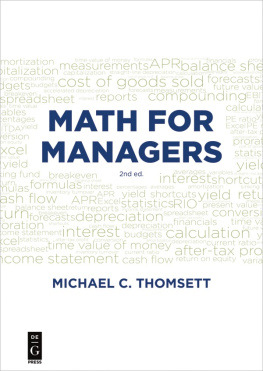


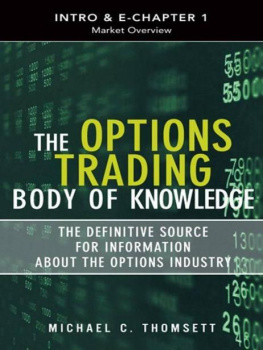

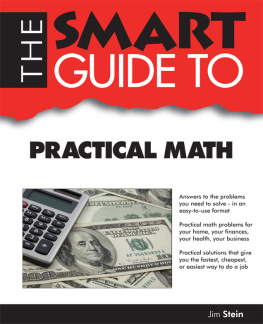
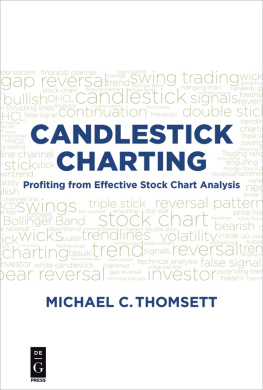



![Kristina Semos - Math 2 Cram Plan [SAT 2 Math Test Prep]: The Ivy Lounge Test Prep Guide to High-Speed, High-Impact Prep for the SAT II Subject Test in Math Level 2](/uploads/posts/book/162872/thumbs/kristina-semos-math-2-cram-plan-sat-2-math-test.jpg)
